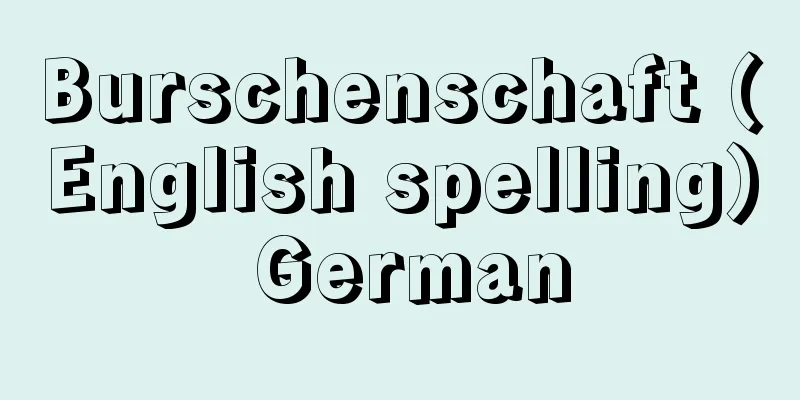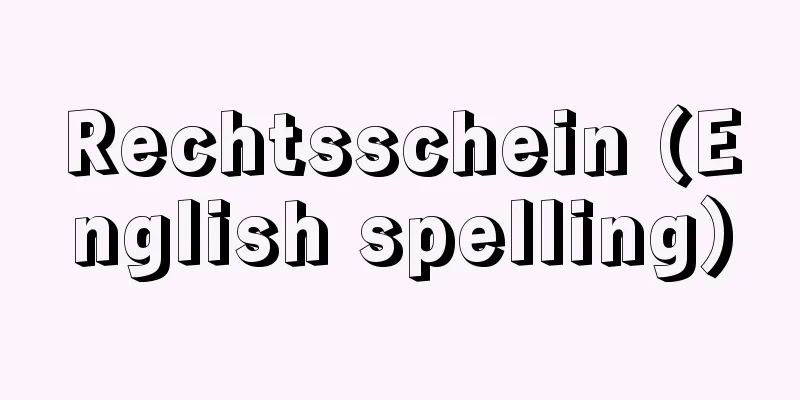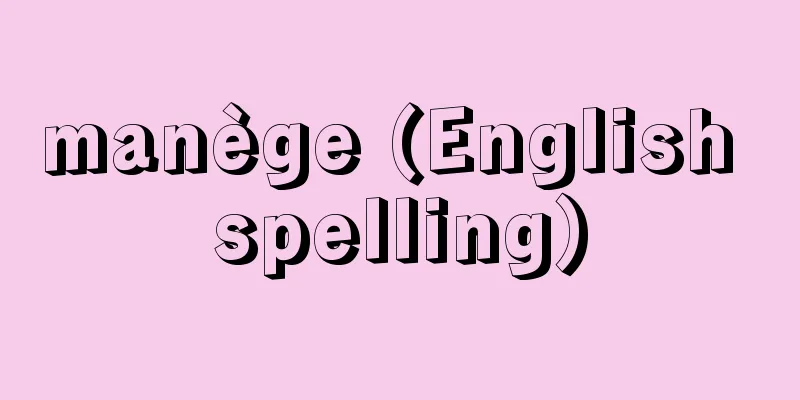Burschenschaft (English spelling) German

|
A student organization that played an important role in the liberal movement in Germany. It is also called the "Student Union" because it means a group of young people. It was formed as a single organization in June 1815 at the University of Jena, rejecting the separationism of the Landmannschaft, a student organization that had traditionally been organized by place of origin. It was led by students who had returned from the Lützow Volunteer Corps and fought in the War of Liberation against France. They adopted a black, red, and gold flag to represent their military uniforms, and advocated German freedom and unity with the slogan "Honor, Freedom, Fatherland." The movement expanded rapidly, and the Wartburg Festival in 1817 led to the formation of the Pan-Deutsche Burschenschaft in October of the following year, with 14 universities joining, forming the first period of the German liberal movement. Following the assassination of the playwright Kotzebue by the radical student K. L. Sandt, Metternich had the Bundestag pass the Carlsbad Resolution in 1819, banning the Burschenschaft and severely suppressing the movement. However, the movement continued through secret societies, and after the Hambach Festival in 1932 the black, red and gold flag became the symbol of the entire German liberal movement. In the 1940s, they formed the "Progressive Movement" and fought for democratization at universities, and actively participated in the 1948 revolution as one of the leaders, but lost their political significance after the defeat of the revolution. [Katsuyo Okazaki] [References] | |Source: Shogakukan Encyclopedia Nipponica About Encyclopedia Nipponica Information | Legend |
|
ドイツにおける自由主義運動の重要な一翼を担った学生団体。若者仲間の意で、「学生組合」ともいう。1815年6月イエナ大学で、従来出身地別に構成されていた学生団体ラントマンシャフトLandmannschaftの分立主義を否定して、単一の組織として結成された。中心となったのは、リュツォー義勇軍に属して対フランス解放戦争を戦った帰還学生で、その軍服にちなんで黒・赤・金旗を採用し、名誉・自由・祖国を標語としてドイツの自由と統一を主張した。運動は急速に拡大し、17年のワルトブルク祭を契機に翌年10月全ドイツ・ブルシェンシャフトが結成され、14大学がこれに参加してドイツ自由主義運動の最初の高揚期を形成した。メッテルニヒは、急進派学生K・L・ザントによる劇作家コッツェブーの暗殺事件を機に、19年カールスバートの決議を連邦議会に行わせ、ブルシェンシャフトを禁止して運動を厳しく弾圧した。しかし、以後も秘密結社によって運動は続けられ、32年のハンバハ祭以後は黒・赤・金旗はドイツ自由主義運動全体の象徴となった。40年代には「進歩主義運動」を形成して大学民主化闘争を行い、48年の革命には指導者の一母体として積極的に参加したが、革命の敗北後政治的意味を失った。 [岡崎勝世] [参照項目] | |出典 小学館 日本大百科全書(ニッポニカ)日本大百科全書(ニッポニカ)について 情報 | 凡例 |
<<: Nikita Sergeevich Hrushchyov
>>: Przheval'skii, Nikolai Mikhailovich
Recommend
People's China (English spelling)
A Japanese-language monthly magazine published in ...
barbe
…In the 14th century, there was a hood called a w...
Inukoriyanagi - Inukoriyanagi
A deciduous shrub of the Salicaceae family (APG c...
Aguiryu - Aguiryu
…It was originally a village temple in the Chikur...
Alpha-converted foods - Alpha-converted foods
...It is convenient as instant rice because it el...
Air - English
This refers to the colorless, transparent gas tha...
Ministry of Central Affairs
A central government office stipulated in the ryo...
Gunter, E.
...A tool designed to simplify calculations such ...
Cargo-only airport - Kamotsu Senyo Kuukou
...However, construction is relatively easy if an...
Kafue - Cafe
...On holidays such as the circumcision ceremony ...
Ritual ruins - Saishiiseki
In a broad sense, it covers all archaeological re...
Awoonor, K. (English spelling) AwoonorK
...It is noteworthy that writers in the post-colo...
Principle of private autonomy
The principle of regulating each person's leg...
Methylamine
CH 5 N (31.06). CH 3 NH 2 . A primary amine. It i...
common depth point stacking
...The number of receiver channels in the observa...


![Sumiyou [village] - Sumiyou](/upload/images/67cbfa65b0c10.webp)






